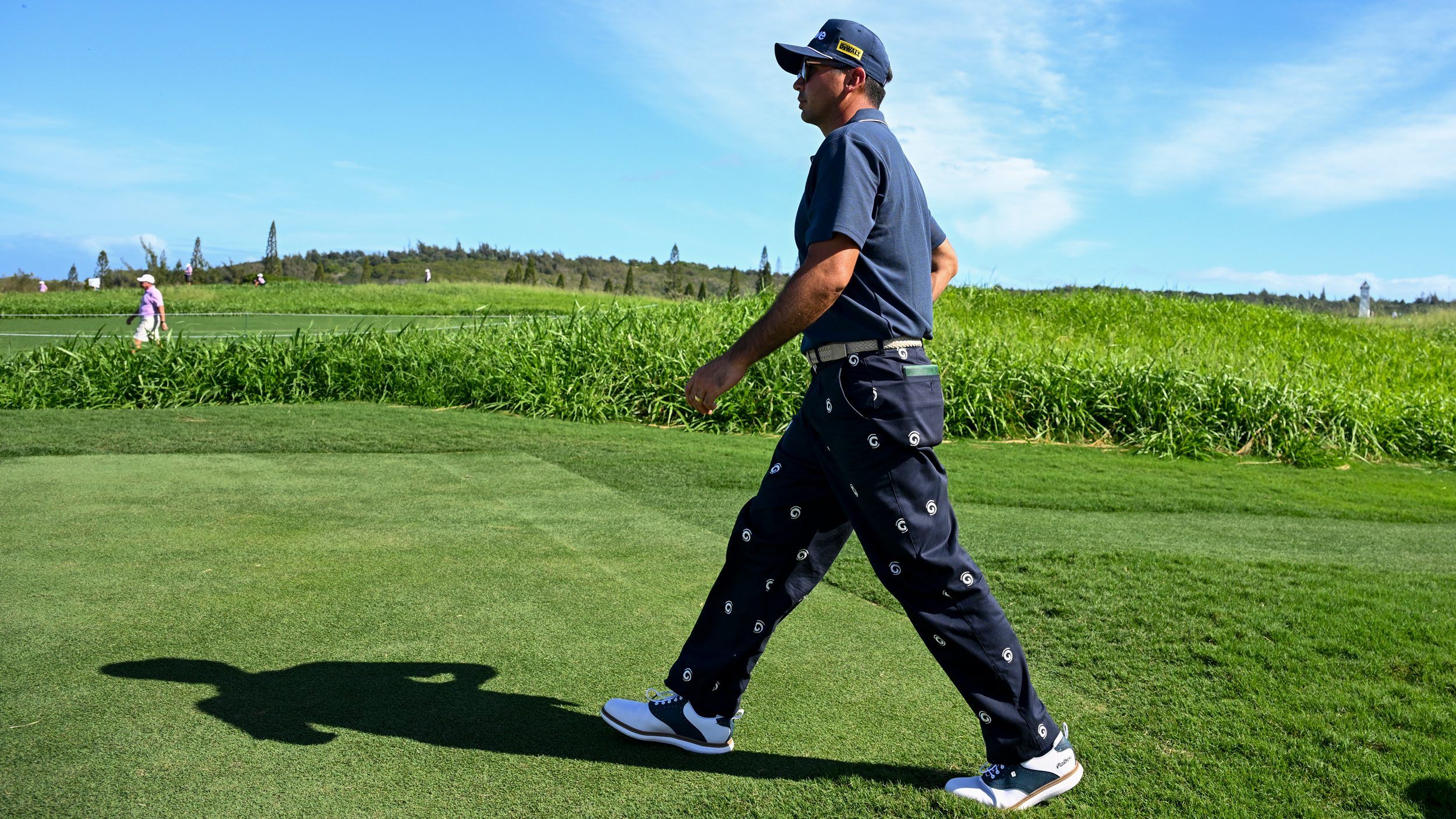Golf Instruction
How to Hit a Lofted Wedge from a Tight Lie
You can be honest – the title of this article caused you to break out in a bit of a cold sweat – right?

If so, you aren’t alone. Hitting a lofted wedge from a tight lie is one of the shots that amateur golfers fear the most.
For many players, it seems that there are only two potential outcomes for this kind of shot, and both of them are bad – hitting the ball fat, or ‘blading’ it over the green.
With that much established let’s shift gears a bit and attempt to take the fear out of this important shot.
In order to score well on a consistent basis you’ll need to be able to handle your lofted wedge shots from tight lies because this is a situation that comes up quite frequently during a round of golf. If you come up short with an approach shot on a par four, or you lay up on a par five, you are likely to find yourself with a tight lie and a pitch of 20 – 40 yards.
The ability to pitch the ball close to the hole for an up-and-down save can do wonders for your scorecard, as well as your confidence. Pro golfers make this shot look routine, and you can do the same with a bit of instruction and plenty of practice time.
The Most Common Mistakes
Unfortunately, there are a number of different mistakes made by amateur golfers attempting to handle this shot. The list below contains some of the popular mistakes that are seen when the average golfer tries to use a lofted wedge to pitch the ball off of a tight lie.
Mistake #1 – All Hands
It is common to see amateur golfers attempt to hit this shot by using their hands almost exclusively to swing the club. Without much of a shoulder rotation in the swing, the club is sure to be released early, and thin contact is almost inevitable. If you are regularly blading these kinds of shots over the green, there is a good chance that you are using mostly hand action to swing the club.
Mistake #2 – Sticking it in the Ground
Afraid of hitting the ball thin, some players will put the ball way back in their stance before hitting down steeply through impact. While it is possible to hit a good shot with this plan, you will fail more often than you will succeed. If you hit the ball cleanly, you can hit a low pitch with plenty of spin – but more likely, you will hit the ball fat and leave it just a few feet in front of where you are standing. A skilled player can use this option from time to time when a low skidding shot is desired, but most people should avoid taking this approach.
Mistake #3 – Sliding the Lower Body
This might be the mistake that is the hardest of all to watch. When a player lacks confidence from short range off of a tight lie, they will often slide their lower body through the forward swing while trying to help the ball off the ground. As you would expect, the results are rarely pretty. You should stay balanced during this swing, and you absolutely should not be sliding to the right or left while playing the shot.
The Right Plan
So, if the points above should be avoided, how should you go about hitting this difficult shot?
The best plan is to make a miniature version of your full swing in order to loft the ball into the air gently time after time. You want to be hitting down just slightly through impact, but not so much that you are going to take a huge divot.
Set up to the shot with a stance that is similar to what you would use for a longer swing, and make sure you keep your left arm in a soft position (for a right handed golfer). The ball should be positioned roughly in the middle of your stance, with a little ‘wiggle room’ forward or back from there depending on the desired trajectory for the shot.
As you practice this shot, think about ‘brushing’ the top of the grass with the bottom of your club at impact. This is the perfect way to go through the ball, as you won’t run the risk of sticking the wedge in the ground before you get to the ball.

Your results may not be perfect at first, but you should see relatively quick improvement as you put in more and more time around the practice chipping green.
Holding Your Nerve
The first part of improving your performance on this shot is mastering the physical technique required. Once that is done, however, there is still another step – you need to get your nerves out of the way in order to execute successfully on the course.
This is naturally a nervous shot, and those nerves are compounded by the fact that you probably have not had much confidence on this kind of shot previously.
To get over your nerves, you need to put in practice time working on your technique – it’s just that simple. Without practice, you won’t be able to feel confident over the ball when pitching from a tight lie, even if you know what kind of technique you are trying to execute.

Find a local golf course that has a short game practice facility and pitch the ball from a tight lie as often as you can. In time, your nerves will naturally melt away as you gain more and more confidence in your ability to pull off this shot successfully.
One Final Word
Adding this shot to your repertoire has the potential to help you save multiple strokes per round after you have had time to practice your technique. In addition to the scorecard benefits that you can enjoy, you also may find that you are more relaxed during your rounds, knowing that you will be able to handle this shot if it happens to come up.
Good luck – now get out there and practice!
Cover Photo via Flickr
-
Equipment6 days ago
Bryson DeChambeau is Using Custom 3D Printed Irons at The Masters
-

 News1 week ago
News1 week agoMalbon Has Jason Day Looking DAPPER for The Masters
-

 Fantasy Golf Predictions3 days ago
Fantasy Golf Predictions3 days agoFantasy Golf Picks, Odds, and Predictions – 2024 RBC Heritage
-
News7 days ago
U.S. Open Champ Takes a Dig at DeChambeau, but Is It Warranted?
-

 News1 week ago
News1 week agoDark Skies Ahead: Masters Forecast to Favor Bad Weather Golfers
-

 News1 week ago
News1 week agoLANDSLIDE: Brandel Chamblee Predicts a Runaway Victory for Past Masters Champ
-
News6 days ago
WATCH: Frustrated Ryder Cup Caption has Choice Words for Masters Patrons
-

 Apparel1 week ago
Apparel1 week agoViktor Hovland Joins Team Puma














